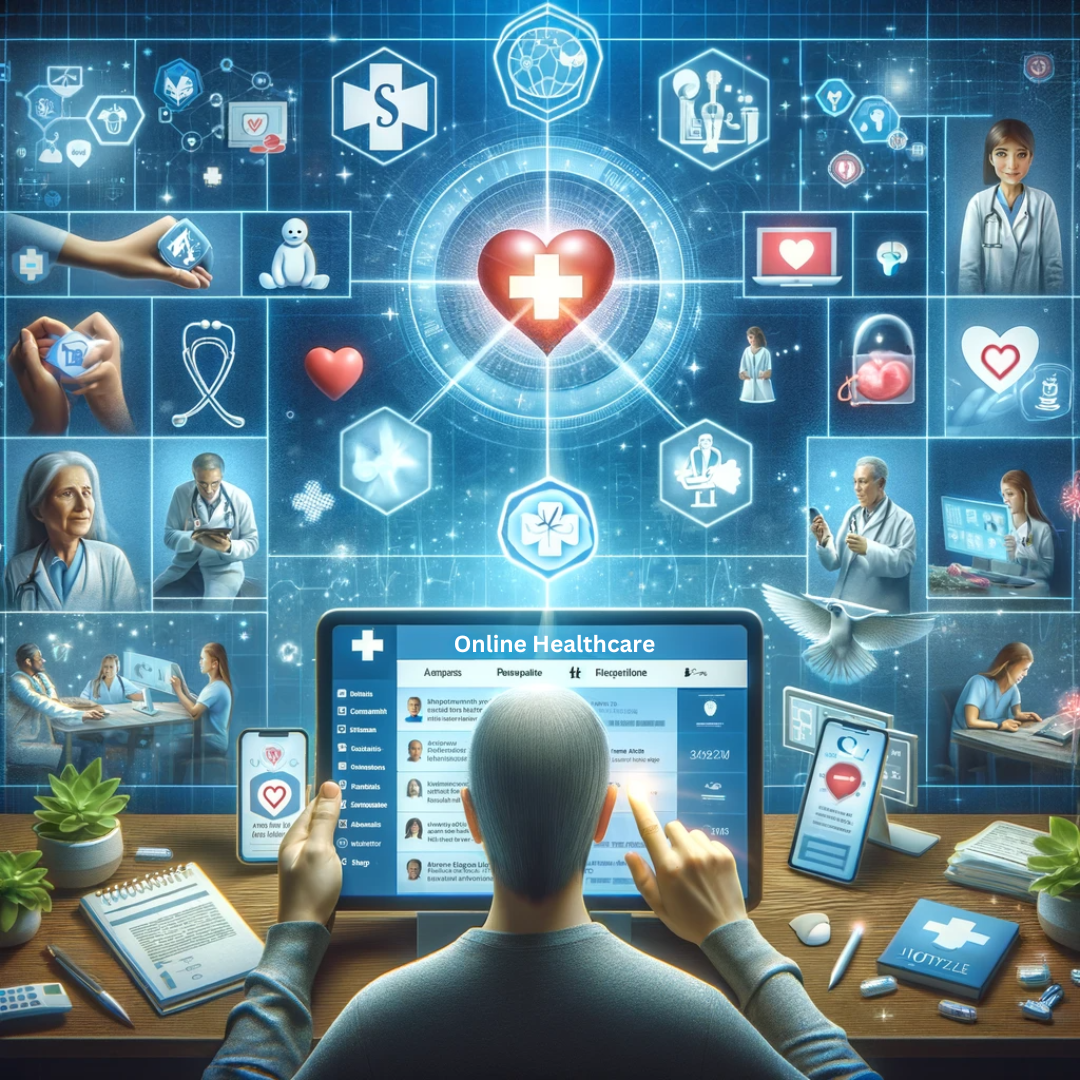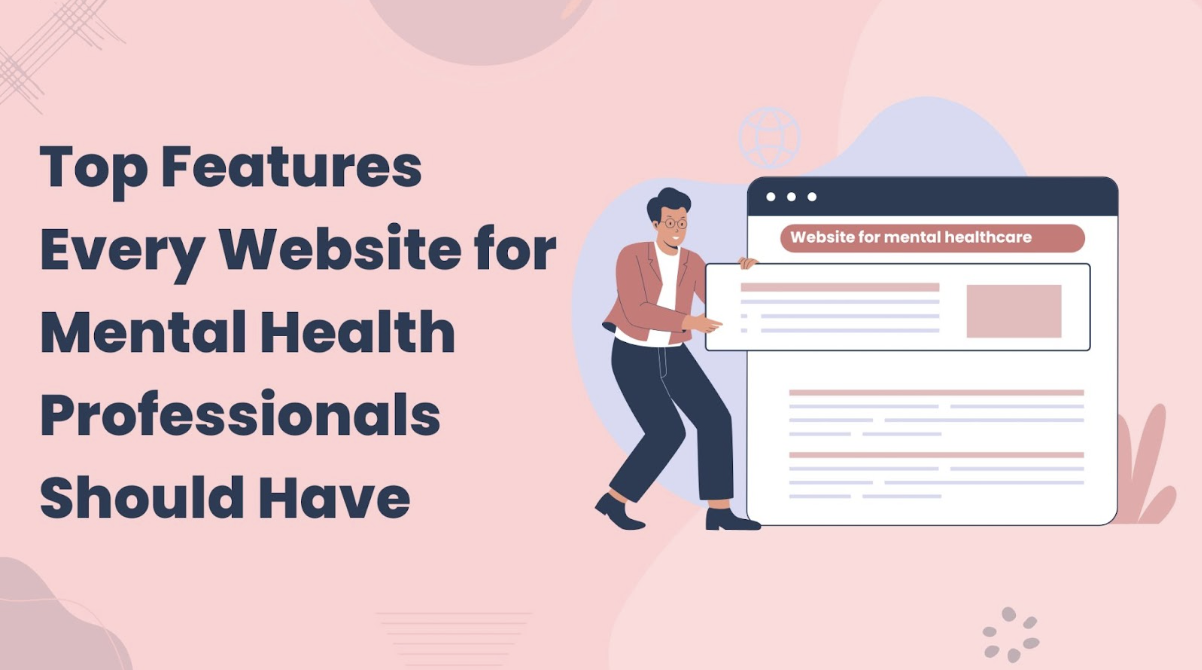The Patient's Perspective How an Online Presence Meets Modern Healthcare Expectations
Amidst a period marked by high technological progress, the healthcare domain is experiencing an important change. Today's patients need a healthcare experience that effortlessly incorporates technology in addition to standard doctor visits. This article explores how an online presence is fulfilling the changing needs of modern medicine from the viewpoint of the patient.

Amidst a period marked by high technological progress, the healthcare domain is experiencing an important change. Today's patients need a healthcare experience that effortlessly incorporates technology in addition to standard doctor visits. This article explores how an online presence is fulfilling the changing needs of modern medicine from the viewpoint of the patient. We'll look into a number of different aspects of the digital transformation in healthcare, including how it affects patient-doctor relationships, the importance of information availability, the benefits of having a website for online healthcare practice, security and privacy concerns, and possible future scope, as we delve into this intricate topic.
I. The Rise of Telemedicine
The use of telecommunications technology to provide treatment remotely, or telemedicine, has become a vital component of modern healthcare. Virtual consultations, which provide convenience and availability beyond geographic limitations, have emerged as the principal means by which patients can communicate with healthcare providers.
The mobility that telemedicine offers is valued by patients. With the use of virtual consultations, people can get medical advice without having to leave the comforts of their homes. This is especially helpful for people who live in remote or underdeveloped locations or who have mobility issues.
Furthermore, telemedicine has shown to be an affordable option for standard medical requirements. Virtual consultations may frequently handle follow-up appointments, minor conditions, and prescription renewals, saving patients time and money.
But problems still exist. Concerns regarding accessibility for specific demographics are raised by the fact that efficient telemedicine still requires dependable internet access. Furthermore, there are uncertainties regarding the efficacy of online consultations for medical issues that require in-person examinations. Ensuring satisfaction for patients requires finding a balance between accepting the easy accessibility of telemedicine while dealing with its shortcomings.

II. Empowering Patients with Information
Patients now have the choice to actively engage in their healthcare journeys thanks to the widespread availability of health-related websites and mobile applications. Patients can now track their symptoms and look up treatment choices with ease because of the abundance of information available to them, making them more educated and involved when it comes to healthcare.
Patients like having access to internet information that helps them comprehend their medical issues and available treatments. Health information applications and websites give people the power to take charge of their health by encouraging autonomy and decision-making involvement.
However, there are drawbacks to this abundance of knowledge. Conflicting information may be presented to patients, which can cause uncertainty and concern. It is the duty of healthcare professionals to direct patients to trustworthy information sources, promote open conversations about their online searches, and encourage a team approach to making healthcare decisions.
III. Patient Portals: Enhancing Communication and Accessibility
An important improvement in healthcare communication is patient portals. Patients can schedule appointments, have secure access to their medical records, and communicate directly with their healthcare team using these portals that are connected into healthcare systems.
Patients appreciate the ease of use and openness that patient portals provide. A sense of empowerment is enhanced by having access to test results, medical information, and the flexibility to consult with healthcare providers whenever it is most convenient for them. Patients are encouraged to actively participate in their care through this transparency, which promotes a collaborative strategy to healthcare.
But there are difficulties. To guarantee that patient portals are widely accepted and effectively utilized, concerns regarding data security, patient digital literacy, and user interface issues must be addressed.
IV. Social Media in Healthcare
Social media platforms are becoming effective tools that healthcare organizations can use to communicate with patients and the general public at large. Social media is vital in influencing the patient experience, from sharing health information to solving common problems.
Social media is used by healthcare organizations to educate and interact with people. Patients are better informed when timely and reliable health information is spread, when new medical trends are updated, and when public health initiatives are promoted.
However, there are moral questions when it comes to using social media for healthcare communication. Healthcare professionals in the digital age have problems related to patient privacy, dispelling false information, and preserving a professional online presence. Establishing trust on social media sites requires open and honest communication, moral conduct, and a dedication to the welfare of patients.
V. The Evolution of Patient Education
A new era of health literacy has been brought about by the democratization of healthcare knowledge on the internet. More and more patients are using websites to learn about their ailments and available treatments.
Patients who are empowered by online health literacy are more informed and more involved in their healthcare decisions. Although this is a good thing, patients could come across contradictory advice, inaccurate information, or misleading content. Healthcare professionals are essential in helping patients navigate the web of information, offering trustworthy sources, clearing up frequent misconceptions, and promoting honest conversation.
E-learning platforms, which provide interactive and intriguing material on a range of health topics, have become invaluable resources for patient education. Distance learning courses, webinars, and virtual support groups can create a better understanding and aware community.
These platforms encourage people to take an active role in their treatment by offering easily accessible and interesting educational content. Ensuring inclusivity as well as accessibility in online educational resources is still difficult, though. Healthcare practitioners must take into account the discrepancies in digital access, the diversity of learning styles, and the customization of content for various demographic groups.
VI. Privacy and Security Concerns
There are several valid reasons to be concerned about patient data security and privacy as healthcare becomes more digital. It is crucial to protect patient information when interacting online and in virtual consultations.
Strong security measures must be put in place by healthcare providers to protect patient data online. This entails following strict data protection laws, using secure telemedicine systems, and encrypting data. Building confidence among patients in virtual healthcare interactions can be achieved by open and honest communication about data security procedures.
It's a constant struggle to navigate the several laws and regulations governing telemedicine. Healthcare providers need to embrace technologies that improve patient care while keeping up with changing laws to ensure compliance. A legislative framework that protects patient privacy without impeding technological progress requires cooperation between lawmakers, technology experts, and healthcare professionals.
VII. Overcoming Barriers to Adoption
Although technology can make healthcare more accessible, there is a digital gap that prevents some people from having as much access as they would like. The goal of efforts to close the digital divide should be to identify and reduce the causes of differences. Narrowing these gaps can be facilitated by collaborative activities including technology providers, lawmakers, and healthcare organizations.
Developing healthcare technologies that are accessible to a wide range of people, culturally sensitive, and easy to use is essential to promoting digital inclusiveness. Additional assistance in removing limitations to technology adoption can come from training initiatives aimed at improving digital literacy in groups that are marginalized.
Healthcare professionals may oppose the adoption of new practices that are necessary for the integration of an online presence in healthcare. Healthcare businesses must undergo a change in culture in order to implement digital tools. Overcoming resistance to change can be aided by leadership campaigns, educational initiatives, and the promotion of an innovative culture.
Healthcare professionals require thorough training and education in the use of digital technologies. This covers both the technological components and the incorporation of these tools into the current workflows in the healthcare industry. Overcoming reluctance can be aided by offering chances for ongoing learning, supportive peers, and the demonstration of effective digital implementations.
Conclusion
In conclusion, the incorporation of an online presence is changing the patient's viewpoint on healthcare. The digital revolution in healthcare is changing how patients access information, interact with medical professionals, and take charge of their own well-being. Examples of these innovations include telemedicine, patient portals, social media, and e-learning platforms. It will be essential to deal with privacy concerns, get beyond adoption barriers, and embrace emerging technology as we traverse this transformative time to meet and surpass the expectations of patients from modern healthcare.
FAQs
How does telemedicine benefit patients in modern healthcare?
It offers convenient virtual consultations, saves costs, and improves access for those in remote or mobility-challenged areas.How does online information empower healthcare patients?
It enables symptom tracking and treatment research, fostering autonomy, though it requires guidance to avoid misinformation.What advantages do patient portals provide?
They offer easy access to medical records, appointment scheduling, and direct communication, enhancing patient engagement.How does social media impact healthcare communication?
It educates and engages patients but raises privacy and misinformation challenges for professionals.What role do e-learning platforms play in patient education?
They provide interactive content and support groups, boosting health literacy despite accessibility challenges.What security measures address privacy concerns in digital healthcare?
Encrypted data, compliance with regulations like HIPAA, and transparent communication build patient trust.Where can healthcare providers enhance their online presence?
Explore tailored website for doctors.
Related Reads. Similar Blogs to Check Out.



